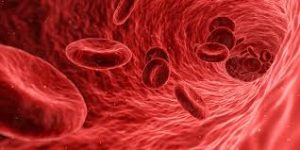Could washing your blood help complex regional pain syndrome?

Complex regional pain syndrome is a painful condition affecting the hand or foot typically after a traumatic injury. Immunoglobulins are proteins that float in the blood and help defend against bacteria, viruses and toxins. Some types of nerve pain can be treated with an infusion of these immunoglobin proteins. There is a thought that there is a substance floating in the blood that causes complex regional pain syndrome. Based on this, a study was conducted where plasma exchange therapy was offered to patients with complex regional pain syndrome. Plasma exchange therapy is when the plasma is removed from the body, “washed” or treated in some way, then returned to the body. In this study, 33 patients were treated with a series of “washings” ranging from 5 to 11 treatments, and it resulted in a 64% pain reduction on average. Maintenance therapy was needed for prolonged pain relief. Of note, that patients with the greatest loss of small fibers and the greatest temperature sensory deficits were most likely to receive help from the therapy. This was a small study and more studies are needed.
The Research
Pain Physician. 2015 Jul-Aug;18(4):383-94.
Plasma Exchange Therapy in Patients with Complex Regional Pain Syndrome.
Aradillas E, Schwartzman RJ, Grothusen JR, Goebel A, Alexander GM1.
1
Drexel University College of Medicine, Philadelphia, PA.
Abstract
BACKGROUND:
Complex regional pain syndrome (CRPS) is a severe chronic pain condition that most often develops following trauma. Some investigators have postulated CRPS to be a post-traumatic neuralgia associated with distal degeneration of small-diameter peripheral axons. Intravenous immunoglobulin treatment (IVIG) has been shown to be efficacious in the treatment of painful polyneuropathies. Some CRPS patients have been reported to respond to IVIG. Based on a recent hypothesis proposing an autoimmune etiology for CRPS, we decided to offer plasma exchange therapy (PE) to CRPS patients with a clinical presentation suggestive of a small fiber neuropathy.
OBJECTIVES:
To evaluate the efficacy of PE in a group of CRPS patients with a clinical presentation suggestive of a small fiber neuropathy that were either non-responders or poor responders to their current treatment.
STUDY DESIGN:
This is a retrospective case series study of CRPS patients that met the Budapest diagnostic criteria for CRPS and received PE as treatment for their illness between September 2012 and June 2014. Approval for this review was granted by the Drexel University Institutional Review Board.
SETTING:
Drexel University College of Medicine pain clinic
METHODS:
Thirty-three CRPS patients that received PE treatment were retrospectively studied. The workup for these patients consisted of a complete medical and pain evaluation, the completion of the short-form McGill questionnaire, quantitative sensory testing (QST), and skin punch biopsy. The PE protocol was as follows: all patients had a series of PE therapies (range 5 to 11 with a mean of 7.2) performed over a 2 to 3 week period. Following the PE series, the patients had a pain evaluation and completed the short-form McGill questionnaire. Patients that responded to PE were offered maintenance therapy consisting of either weekly PE or other immune modulating agents. In these patients, their pain was evaluated during the maintenance phase.
RESULTS:
Thirty of the 33 patients demonstrated significant (P < 0.01) median pain reduction of 64% following the initial series of PE. Three patients demonstrated no improvement. Twenty-four patients are receiving maintenance therapy, the pain reduction in these patients following the initial PE series has been maintained with either weekly PE (n = 15), oral immune modulating agents (n = 8), or IVIG (n = 1). The remaining 6 patients are not receiving maintenance therapy and their pain has returned to pre-treatment levels. In addition, this study suggests that patients with the greatest loss of small fibers and the greatest temperature sensory deficits are most likey to benefit from PE therapy.
LIMITATIONS:
The major limitation of this study is its retrospective nature which includes non-randomization, non-blinding, and an uncontrolled design.
CONCLUSIONS:
This study shows that PE is effective in a subset of patients with severe long-standing CRPS and that the reduction in pain following the initial series of PE treatments can be maintained on a weekly PE schedule, IVIG, or with other immune modulating drugs. Large, randomized, placebo controlled studies may be required to confirm and expand these results. Such studies may lead to new therapies for this severe life-altering condition.











